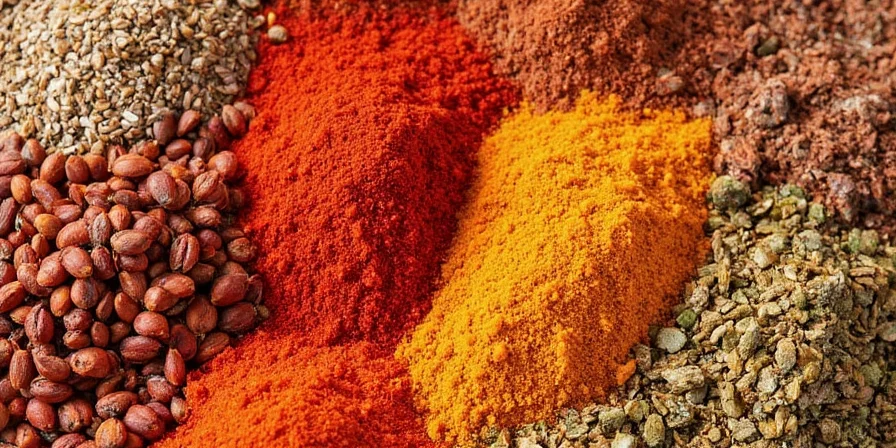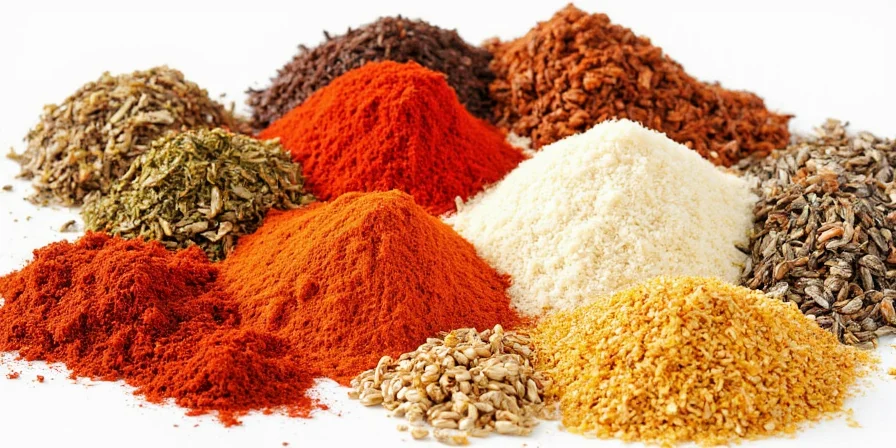Top 10 Thai Food Spices That Will Spice Up Your Life (Literally!)
If you've ever tasted a real Thai curry, you know that it's more than just a meal—it’s an explosion of flavors, heat, and aromatic magic. But what really makes Thai cuisine stand out? It’s the secret weapons in every dish: Thai food spices.
In this article, we’re diving deep into the heart of Thailand’s spice cabinet. Whether you're a professional chef looking to refine your red curry or a curious home cook wanting to replicate street food favorites, this list is for you.
Table of Contents
- Why Thai Spices Matter
- Top 10 Thai Food Spices You Need to Know
- Spice Comparison Table
- Pro Tips for Using Thai Spices
- Conclusion
Why Thai Spices Matter
Thai cuisine isn't just about being spicy—it's about balance. The perfect Thai dish balances five elements: sweet, salty, sour, bitter, and umami. And guess who pulls off this balancing act with flair? Thai food spices!
Unlike many cuisines that use dried spices as secondary flavorings, Thai cooking treats them like lead actors. Fresh chilies, lemongrass, galangal—they all take center stage in traditional dishes like green curry, pad Thai, and tom kha gai.
Top 10 Thai Food Spices You Need to Know
Let’s get down to business. Here are the top 10 essential Thai food spices that every kitchen should have if you want to bring that authentic Thai taste to life:
- Galangal – Often mistaken for ginger, but with a sharper, more citrusy flavor.
- Lemongrass – Adds a fresh, lemony note that brightens up soups and curries.
- Kaffir Lime Leaves – Essential for green curry and tom kha soup—fragrant and unmistakably Thai.
- Fish Sauce – Not technically a spice, but the backbone of Thai savory flavors.
- Shallots – Used both raw and fried for depth and crunch.
- Cilantro (Coriander Root) – Roots are used in curry pastes for earthy richness.
- Garlic – Pungent, bold, and present in nearly every base paste.
- Bird’s Eye Chili – Small but mighty! The main source of heat in Thai cooking.
- Black Pepper (Freshly Ground) – Used for its pungency and warmth, especially in stir-fries.
- Coriander Seeds – Toasted and ground for dry rubs and curry powders.
Thai Spice Comparison Table
| Spice | Flavor Profile | Common Uses | Substitutes |
|---|---|---|---|
| Galangal | Woody, peppery, citrusy | Curries, soups | Ginger (not ideal, but usable) |
| Lemongrass | Fresh, lemony | Tom yum, marinades | Lemon zest + lemon verbena |
| Kaffir Lime Leaves | Aromatic, floral | Green curry, coconut-based soups | Lime zest + bay leaf |
| Bird’s Eye Chili | Fiery hot | Curries, nam jim, chili pastes | Habanero or serrano peppers |
| Coriander Root | Earthy, nutty | Curry pastes | Ground coriander + parsley root |
Pro Tips for Using Thai Spices
Want to take your Thai game from “meh” to “mah-tastic”? Try these expert-level tips:
- Toasting Spices: For deeper flavor, toast coriander seeds and peppercorns before grinding.
- Use Fresh Ingredients: Fresh is best—especially with chilies, lemongrass, and galangal. Freeze extras for later use.
- Make Your Own Curry Paste: Store-bought can be convenient, but homemade lets you control the spice level and freshness.
- Layering Flavors: Start with aromatics like garlic and shallots, then build complexity with other spices.
- Balance Is Key: Don’t forget to balance heat with sweetness (palm sugar), acidity (lime juice), saltiness (fish sauce), and umami (soy sauce).

Mistakes to Avoid
- Overusing fish sauce: A little goes a long way. Taste as you go!
- Using old spices: Old spices lose potency. Refresh your pantry annually.
- Cooking delicate spices too long: Kaffir lime leaves and lemongrass need time to infuse but shouldn’t be overcooked.
Conclusion
Thai food spices are more than just heat—they're layers of aroma, depth, and soul. With the right ingredients and techniques, anyone can recreate that restaurant-quality flavor at home.
So next time you reach for that curry paste or bottle of fish sauce, remember: you're not just cooking—you're conducting a symphony of flavors. And now you’ve got the score.

Happy cooking, and don’t forget to leave room for a little extra chili 😉.










 浙公网安备
33010002000092号
浙公网安备
33010002000092号 浙B2-20120091-4
浙B2-20120091-4